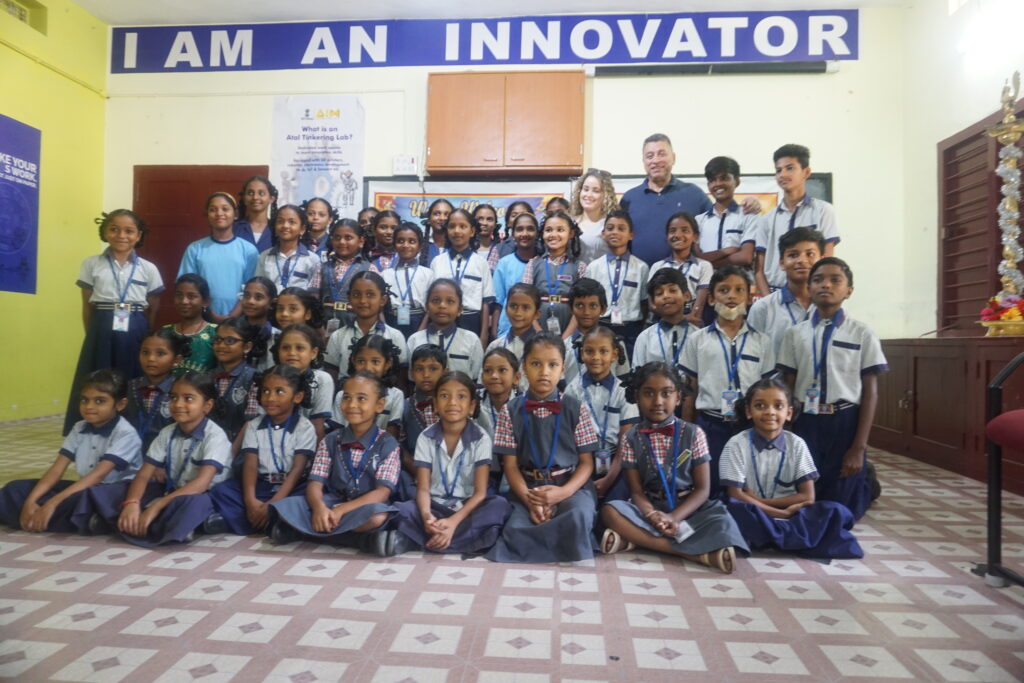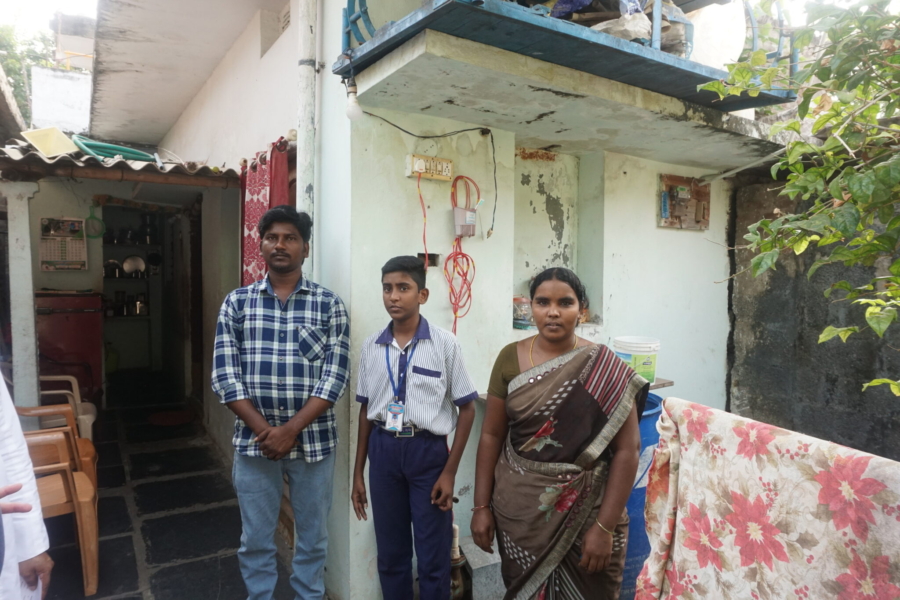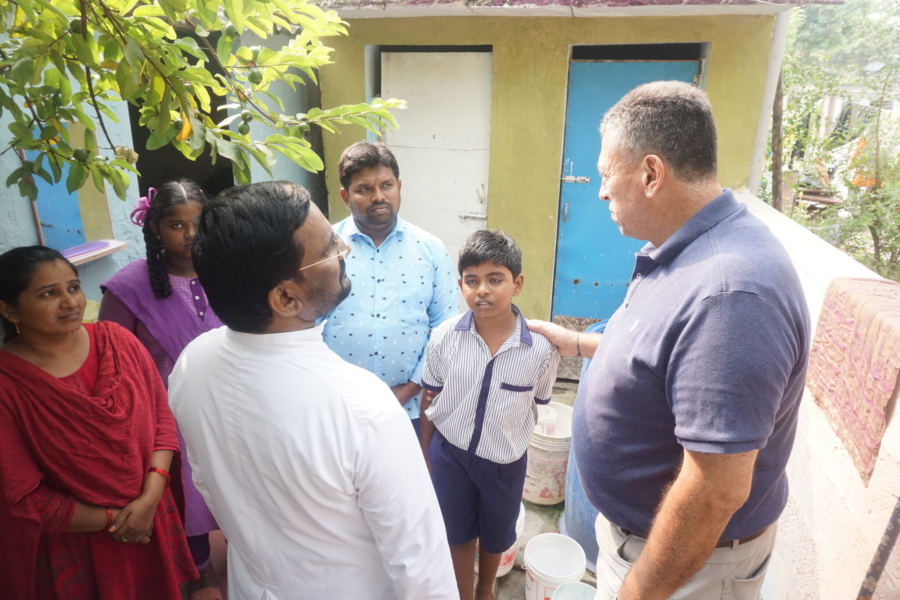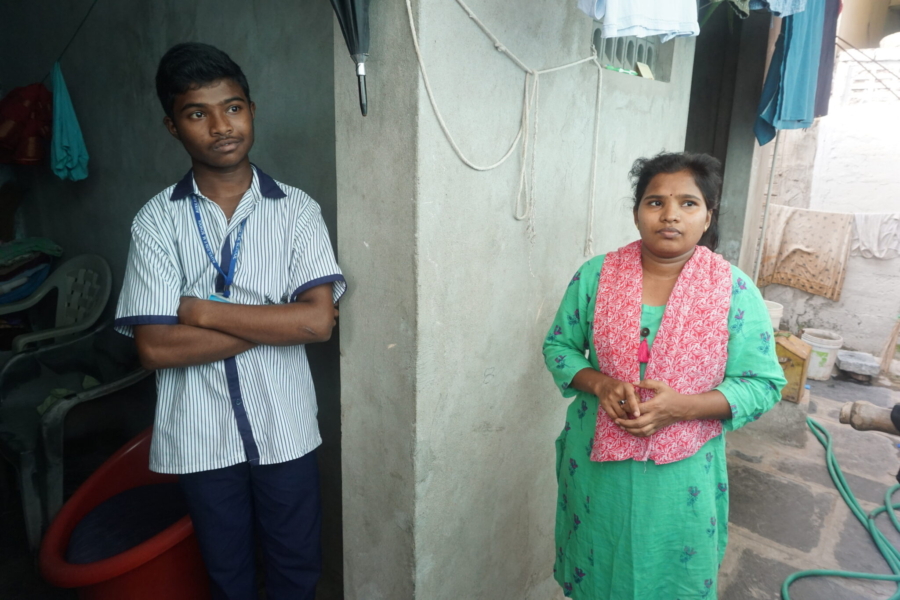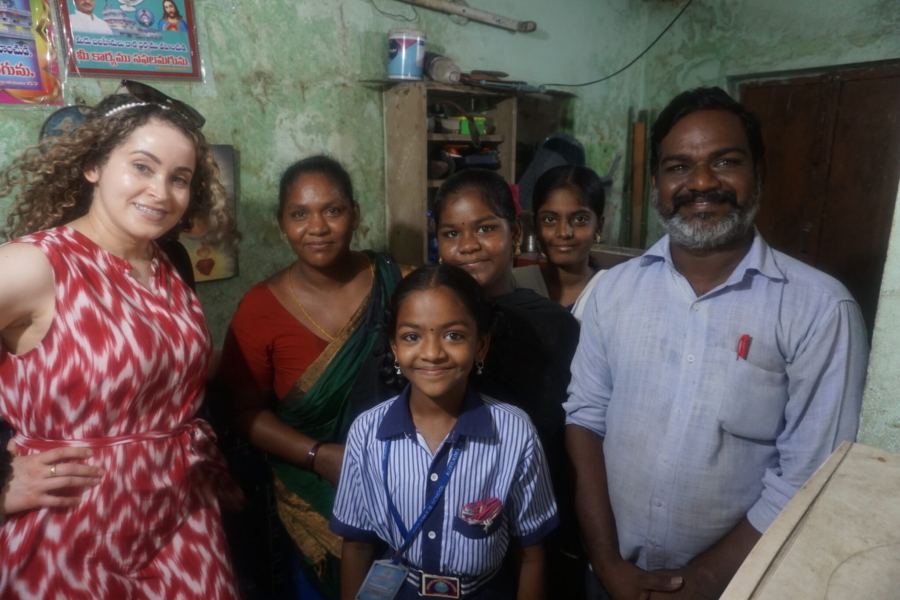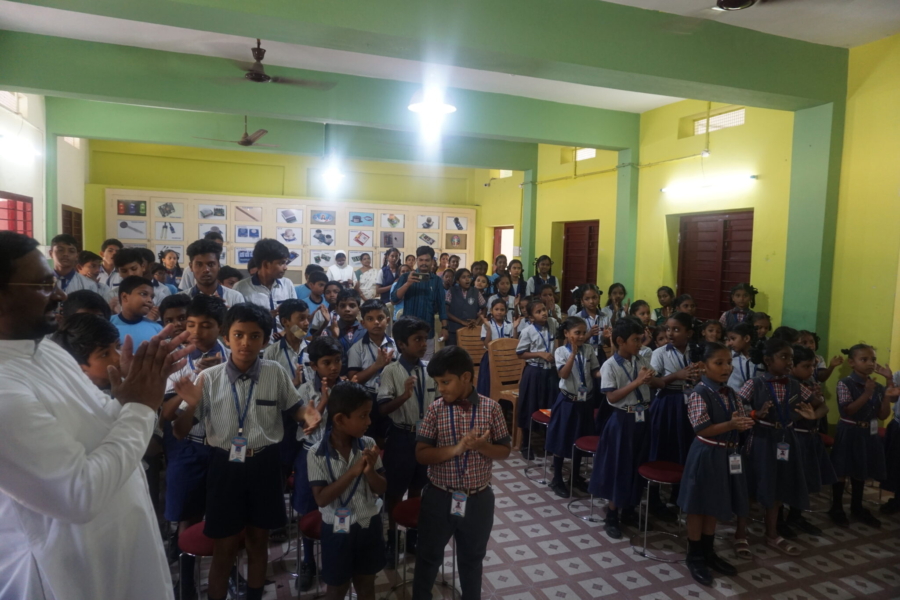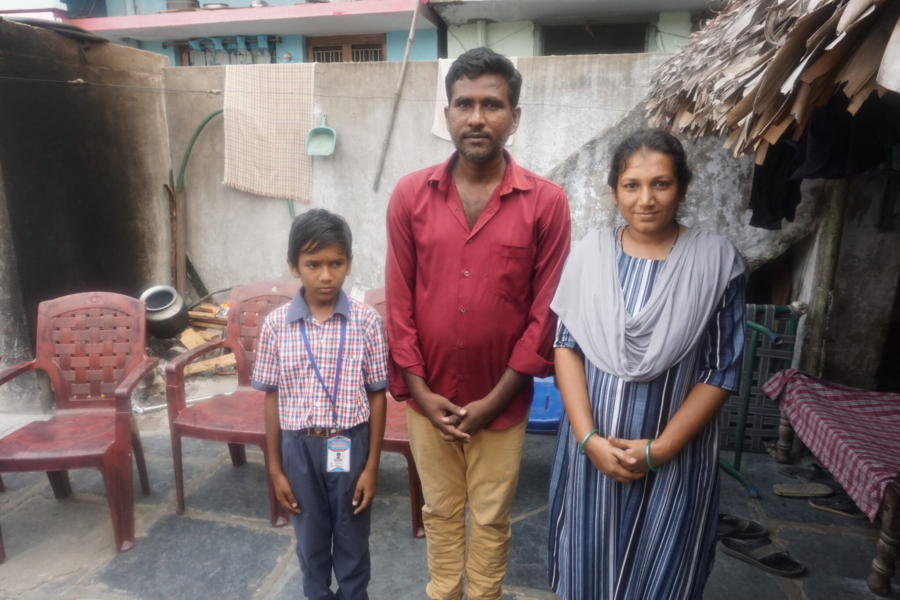As our Director of International Programs, Luis Bourdet, continues his visits to our affiliated sites in India, he travels to the state of Andhra Pradesh to meet with our volunteer coordinator and students at the Auxilium School. The Auxilium School recently absorbed another nearby school and continues to be known for its outstanding educational program, which many children benefit from solely thanks to our sponsors.
Arriving in Guntur
“Upon leaving Dornakal, it took us about 4-5 hours of driving to reach the city of Guntur. The large state of Andhra Pradesh was bifurcated into two new states: Telangana State and Andhra Pradesh, and the largest city in the original state was Hyderabad. Traditionally, Andhra Pradesh area was more the coastal area, so the state of Andhra Pradesh was assigned to the area of the original state near the coast, and the central area, where Hyderabad, the original capital city, was located, stayed as the State of Telangana. This was a problem for everyone, as most private and public investments had been made for many years in Hyderabad,” said Luis.
“This school provides a very sound education to children from kindergarten to high school. The children receive core classes according to the state’s required curriculum, and the demands for a good education exist.”
“The state has only smaller cities with poor urban infrastructure in the coastal area. To satisfy these concerns, the Indian government worked to create a new capital city for the state of Andhra Pradesh. With the help of local municipal governments, new investments, and the World Bank, they secured a new area for the capital city.”
“Guntur was a small city with poor urban designs and a conglomeration of about 400,000 people in a small area. The new developments started in the city’s outskirts, and more and more companies came to build homes here, and housing construction in the thousands started. The town had a pause during the pandemic, but housing construction and some urban development have been reestablished,” explained Luis.
“The city of Guntur is now bursting with heavy traffic, an affluence of people from all over the state, and chaos. Here, the Catholic Diocese of Gunter and Children Incorporated supports some of the poorest of the poor children. They are children, mostly day workers who previously worked in the fields outside the city, are now absorbed by urban development, and mainly work in services without permanent jobs.”
Meeting with our coordinator
“The Gunter Diocese was supporting hostels in parishes outside the city limits, but one is now swallowed by the city expansion. The diocese sees the need to support the affluence of poor people coming into the city in search of jobs that are not usually available because this is a city in transition. There are no permanent jobs to be had,” said Luis.
“Children Incorporated was supporting two programs here, a private school run by the Catholic Church, the Auxilium School, and a hostel, Stambalagaruvu Hostel, also run by the Catholic Church and supporting children of some of those families that got re-located due to the new development of the city. During our visit, we had many questions about our program, I met with our volunteer coordinator, Mr. Fr. Y. Marreddy. Fr. Marreddy took me to his office and indicated that he oversees Social Programs within the Diocese, including children’s support programs.”
Two schools becoming one
“I learned that the Diocese relied on the local government’s support to upkeep the hostels and that support was suspended recently. For this reason, the priest in charge of the Stambalagaruvu Hostel could no longer sustain the facility. Fr. Marreddy decided to absorb the Stambalagaruvu children into the Auxilium School. Since most live near the facility (Stambalagaruvu hostel is next door to the Auxilium School), he asked the school administrators if they could accept the children and cover the school fees with the sponsorship support funding. The sisters in charge accepted, and since last year, we have had the boys from Stambalagaruvu hostel attend Auxilium School,” explained Luis.
“All parents of the children in our program are very proud of making any sacrifices to make sure their children, even coming from a very humble environment, can attend the school and be proud of the education they are receiving.”
“The Auxilium School is a private school run by the Salesian Sisters, now the Director of the Community, and in charge of the Children Incorporated program there is Sister Bridget Jacob; of course, this is in coordination with Fr. Marreddy. This school provides a very sound education to children from kindergarten to high school. The children receive core classes according to the state’s required curriculum, and the demands for a good education exist. The facilities are ample and in good shape. Professional capacity is provided to all personnel, and the school has an excellent reputation.”
“For this reason, all parents of the children in our program are very proud of making any sacrifices to make sure their children, even coming from a very humble environment, can attend the school and be proud of the education they are receiving,” said Luis.
“The Children Incorporated sponsorship funding is utilized entirely in education. This is for both groups, the original Auxilium School children and the Stambalagaruvu children. An effort to provide all educational materials at the beginning of the year, including backpacks and shoes, is also made. The children are doing great, and all have improved their education.”
“Before my visit ended, I met the children and asked questions about the changes and the school. They all seemed very happy about it, as they see it as an improvement,” said Luis.
***
How do I sponsor a child with Children Incorporated?
You can sponsor a child in one of three ways: call our office at 1-800-538-5381 and speak with one of our staff members; email us at sponsorship@children-inc.org; or go online to our sponsorship portal, create an account, and search for a child in that is available for sponsorship.

